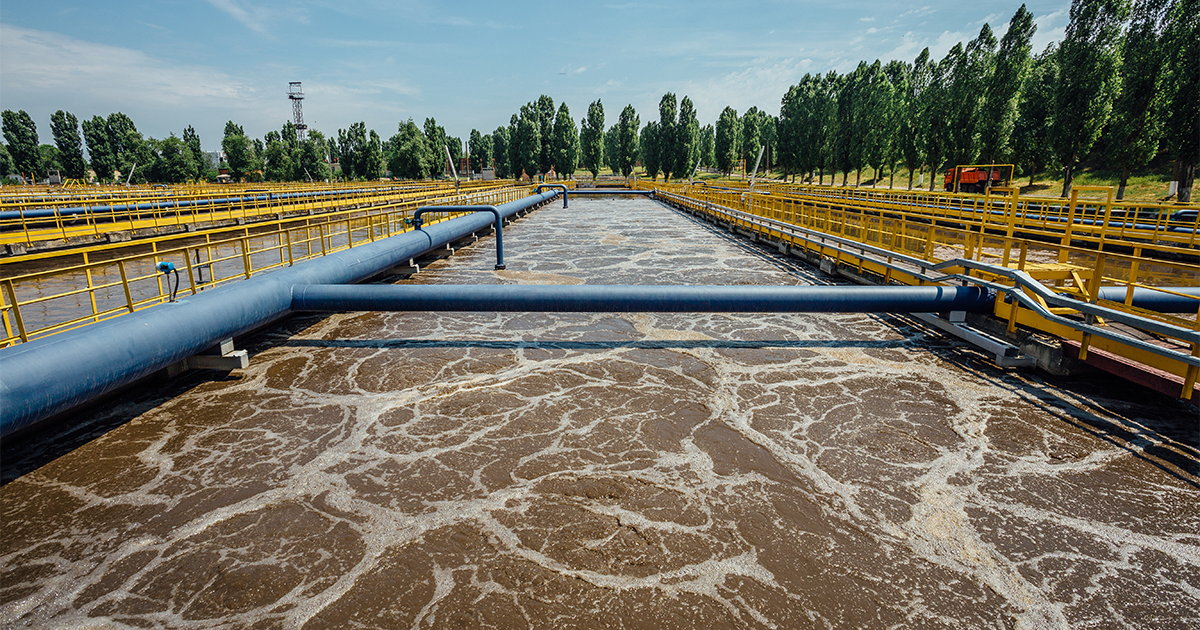Liquid Assets: How Wastewater Treatment Facilities Produce High-Yield Returns for the Future

16
Oct 24
Liquid Assets: How Wastewater Treatment Facilities Produce High-Yield Returns for the Future
Have you ever wondered how wastewater facilities in the United States treat 34 billion gallons of wastewater daily? Welcome to the fourth edition of Water Use Wednesday! Today, we’re exploring the backend of industrial water to learn how it’s treated and disposed of after use. Industrial processes can often leave behind chemicals, small waste particles, dissolved metals and other environmentally harmful components in the water used. Consequently, numerous regulations and laws govern wastewater disposal. Wastewater may require several types of treatment before environmental release, which can depend on the volume of suspended particles (TSS – total suspended solids), the size of these particles (TDS – total dissolved solids), as well as the general particle content and chemical composition (BOD – biochemical oxygen demand). In this post, we will cover preliminary, primary, secondary, and tertiary wastewater treatment.

Preliminary Treatment
Preliminary treatment – the first and most basic step in the water purification process – involves running the wastewater through a large grate before further processing. This ensures that any large materials such as trash, plastic, branches, and other potentially destructive objects do not reach the pumps and cause clogging.
Primary Treatment
Primary treatment removes whatever will float and sink. In many cases, the water is run through grit chambers, where the heavier materials like small stones and sand, sink to the bottom and are removed. Next, the water is pumped into clarifiers where it is allowed to settle. Clarifiers are large, circular tanks that can hold approximately 1.1 million gallons of water. Skimmers rotate along the top to remove floating material like scum, while scrapers at the bottom collect settled waste. Clarifiers can remove 50 to 70% of the total suspended solids within the wastewater. This process generally takes a couple of hours, after which the water is moved on to secondary treatment.

Secondary Treatment
Secondary treatment continues the purification process by using biological methods to remove additional impurities. This can be done in a variety of ways. One common method is aerobic processing, where air is pumped into the wastewater to dramatically increase microorganism populations through oxygenation. The microorganisms feed upon even the tiniest pieces of organic material, using metabolic processes to break it down. Aerobic processing can also work with another process called flocculation, which involves the agglomeration of small particles to further reduce biological compounds in the water. During aerobic processing, clarifying agents cause small particles to form larger groups called flocs, which sink to the bottom and are then easily removed. The byproduct is called activated sludge, which is full of effective microorganisms and can be used to further break down other organic compounds in wastewater.
A second method is to utilize anaerobic bacteria to break down solids within the water. Anaerobic processing is more cost effective than aerobic, as anaerobic does not require aeration within the tank. Anaerobic processing also supplies methane which can be used to fuel other industrial applications within an operation.
After secondary treatment, most water can be released into the environment, although there are some cases when the water needs additional purification. Perhaps the water needs to be drinkable, or there is a delicate ecosystem near the point of disposal – this is where tertiary treatment comes in.
Tertiary Treatment
There are many ways that water is further purified after primary and secondary water treatment. The following three methods take different approaches to generate the same result - purified water.
UV lighting is a highly effective and affordable solution which unlike filtration, results in no waste. Wastewater runs underneath large UV lights and radiation from the light breaks chemical bonds which alter the DNA of microorganisms or harmful bacteria within the wastewater. This can remove their ability to reproduce and even kill them, thereby eliminating any risk.
Nanofiltration is another method often used when recycling wastewater. Water is pushed through a filter with tiny holes 0.1 nm to 0.001 µm in size. These holes are so tiny they can remove divalent and trivalent elements, making them useful to cleanse the water of heavy metals and other toxic chemicals. Nanofiltration is often used as a pretreatment to reverse osmosis.
Reverse osmosis is the highest level of filtration. Water is pushed through an even smaller filter at high pressures of 400 to 500 psi. For perspective, average at home water pressure is 40 to 70 psi. After the water is moved through this filter, virtually everything has been removed except the water. Chemicals, metals, and even harmless elements such as calcium and magnesium are blocked. Reverse osmosis is often used to treat saltwater (ding, ding, ding!), as it can block dissolved minerals such as salt. Tertiary treatment is the final step in the process of purifying industrial wastewater to transform it into usable, disposable, and in most cases, drinkable water.
Clean and Clear Progress: The Industrial Wastewater Success Story
The journey industrial wastewater takes from initial processing through tertiary treatment, showcases the meticulous steps required to ensure environmental safety and water quality. From removing large debris to employing biological and advanced filtration methods, each stage plays a crucial role in transforming contaminated water into a valuable resource. By utilizing innovative technologies like UV lighting, nanofiltration, and reverse osmosis, industries not only meet regulatory standards but also contribute to broader environmental and societal benefits. Effective wastewater treatment protects public health by reducing waterborne diseases, preserving aquatic ecosystems, and conserving precious water resources through recycling and reuse. Moreover, it plays a role in mitigating climate change by reducing greenhouse gas emissions associated with water management. The wastewater treatment industry itself drives economic growth, creating jobs and spurring innovation in water technologies. Companies investing in superior treatment methods demonstrate corporate responsibility, potentially enhancing their public image. Ultimately, these efforts result in water that is not only clean and usable but also supports the long-term health of our ecosystems, communities, and economies. As we face increasing environmental challenges, industrial wastewater treatment stands as a critical component in our broader efforts towards sustainable resource management and environmental stewardship.

